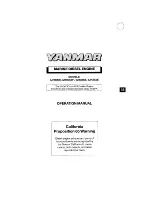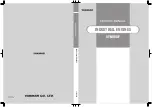
CDS on the 7W2 Connector (CDS7)
As a result:
l
When you order the D-series CDS7 SmartMotors and new Add-A-Motor cables, you get
prewired, instant, full-network capability, and those networked motors are auto-detectable
directly from SMI.
l
This allows for auto-addressing and ease of reconnection at the next power up.
l
Unlike competitive CANopen devices, the CDS7 SmartMotors do not require single-node power
up to set addresses. You can power up all at once, have SMI detect them and set all motor CAN
bus addresses in a single line of code. For details, see Detecting and Addressing the
SmartMotors on page 51.
CDS7 is fully backward compatible with the wiring method described in the previous section.
Therefore, all -CDS7 option SmartMotors can be wired either through the D-sub connector or the 7W2
connector, and there is no change in motor part numbers for the 7W2 method. The only part change is
the cabling used to connect the motors - refer to the figures, descriptions and part numbers later in
this section.
When the SmartMotor is a terminating node on the CAN bus, the 120 Ohm terminating resistor (shunt)
must be wired to pins 10 and 11 of the 15-pin D-sub connector. A 120 Ohm terminating resistor
(shunt) is also required at the beginning of the CAN bus. See the following figures.
For further convenience, a 15-pin pass-through D-sub connector (Pass-Thru Terminator, PN: CBLSM-
TR120) is available that contains a built-in 120 Ohm terminating resistor (shunt). When a SmartMotor
is the terminating node and the 7W2 wiring method is used (described previously), you can simply
install the pass-through connector on the SmartMotor's 15-pin D-sub connector to serve as the
terminator.
Moog Animatics Class 5 SmartMotor™
Installation and Startup Guide,
Rev. I
Page 43 of 76
















































